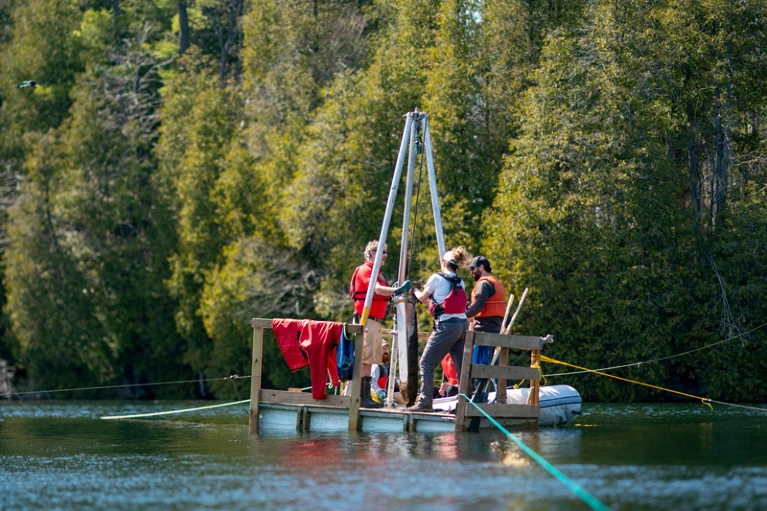Después de 15 años de discusión y exploración, un comité de investigadores ha decidido que el Antropoceno, generalmente entendido como la era de los impactos humanos irreversibles en el planeta, no se convertirá en una época oficial en la línea de tiempo geológica de la Tierra. El fallo, reportado por primera vez por The New York Times, está destinado a ser definitivo, pero está siendo impugnado por dos miembros destacados del comité que dirigió la votación.
For 15 years, geologists have been involved in a complicated technical process to determine whether human impacts on Earth systems amount to a new geological epoch. Earlier this month, 12 members of a subgroup of one of their professional bodies, the International Commission on Stratigraphy (ICS), voted that the ‘Anthropocene’ is not a new epoch that would have ended the Holocene epoch, which started some 11,700 ago at the end of the last ice age. Four voted in favour of the proposed new epoch. Some members want to annul the vote because of disagreements about whether ICS rules were followed, including during the voting process.
News of the vote, and the ensuing controversy, has created both confusion and concern, including among those currently working on Anthropocene science. This confusion arises because the term is understood and widely used by scientists, as well as people outside research, to mean a time in Earth’s history when humans are having severe biophysical impacts on the planet.
The concept is used by researchers in natural sciences, engineering, humanities and social sciences; by authors of books on the topic, film-makers, editors of journals with Anthropocene in the title and, indeed, by the Nature Portfolio. In 2023, we launched a newsletter called ‘Nature Briefing: Anthropocene’, highlighting research about humanity’s footprint on Earth.
The difficulty is that the concept has taken off while geologists have been locked in discussion about how the Anthropocene should be measured, and when it started. One concern is that a rejection of the proposed epoch could lead to the perception that scientists somehow doubt that there is a human fingerprint on global change.
The Anthropocene concept, in its wider sense, is more than one century old1. The word was used at least as long ago as 1922 by Russian geologist Aleksei Pavlov. The term was popularized after Dutch atmospheric chemist Paul Crutzen and US biologist Eugene Stoermer reintroduced it in 2000. At the time, Crutzen and Stoermer were less concerned with finding a precise start date than researchers are now, but they did have a preference2: “To assign a more specific date to the onset of the ‘anthropocene’ seems somewhat arbitrary, but we propose the latter part of the 18th century, although we are aware that alternative proposals can be made (some may even want to include the entire holocene).” In 2002, Crutzen wrote in Nature3: “It seems appropriate to assign the term ‘Anthropocene’ to the present, in many ways human-dominated, geological epoch, supplementing the Holocene. [It] could be said to have started in the latter part of the eighteenth century, when analyses of air trapped in polar ice showed the beginning of growing global concentrations of carbon dioxide and methane.”
But words such as ‘epoch’ and ‘period’ have precise meanings in the study of Earth’s history, which is where the ICS, as a standards-setting body, comes in. According to conventions in geology, a new geological unit of time such as the Anthropocene needs permanent signals in rocks, sediment or glaciers. Candidates for such signals include microplastics, particulates from burnt fossil fuels, pesticide residues or radioactive isotopes from nuclear-bomb tests. The proposed marker location is Crawford Lake near Toronto, Canada, where plutonium from hydrogen-bomb tests, detected in 1952, settled in the lake’s sediment. As the latest vote demonstrates, there’s some way to go before this issue is resolved.
The current lack of agreement on a start date and which marker to use should not detract from the Anthropocene as a concept. The Sustainable Development Goals (SDGs) provide a useful comparison. The principle of a set of global goals and associated targets to end poverty and achieve environmental sustainability was agreed on by the international community in 2015. But the task of defining the goals, targets and indicators came later and was left to specialists, with policymakers pledging to stay out of the process.
The measurement of progress towards each of the 17 SDGs is the responsibility of a set of ‘custodian’ agencies. These are relevant international expert bodies, working with United Nations agencies. The custodians are charged with proposing measures for the goals and targets in their area of expertise. Periodically, the agencies come together to compare notes — for example, on targets for which data could be improved — and exchange ideas before returning to their individual groups to refine their knowledge. Working in this way, involving specialists from a variety of fields, undoubtedly helps to improve knowledge.
That process is still continuing. Even now, some nine years later, around one-third of the 231 unique data indicators for SDG targets are recorded in the second-highest category of accuracy. Whether countries are able to regularly produce data, a requirement of the highest tier, does not negate the necessity of achieving the goals. The same overarching principle could be applied to the Anthropocene. The absence of an agreed marker and a specific start date should not detract from the reality of a discernible human fingerprint on Earth systems.
Measurement matters. It is needed not least so that the world is confident that the Anthropocene’s start date and marker are grounded in the broadest consensus of scholarly knowledge. Geologists must quickly resolve their disagreements. At the same time, there is little doubt that the world is in an Anthropocene, as understood by researchers who use the term, and that course correction is needed.
Fuente: https://www.nature.com


